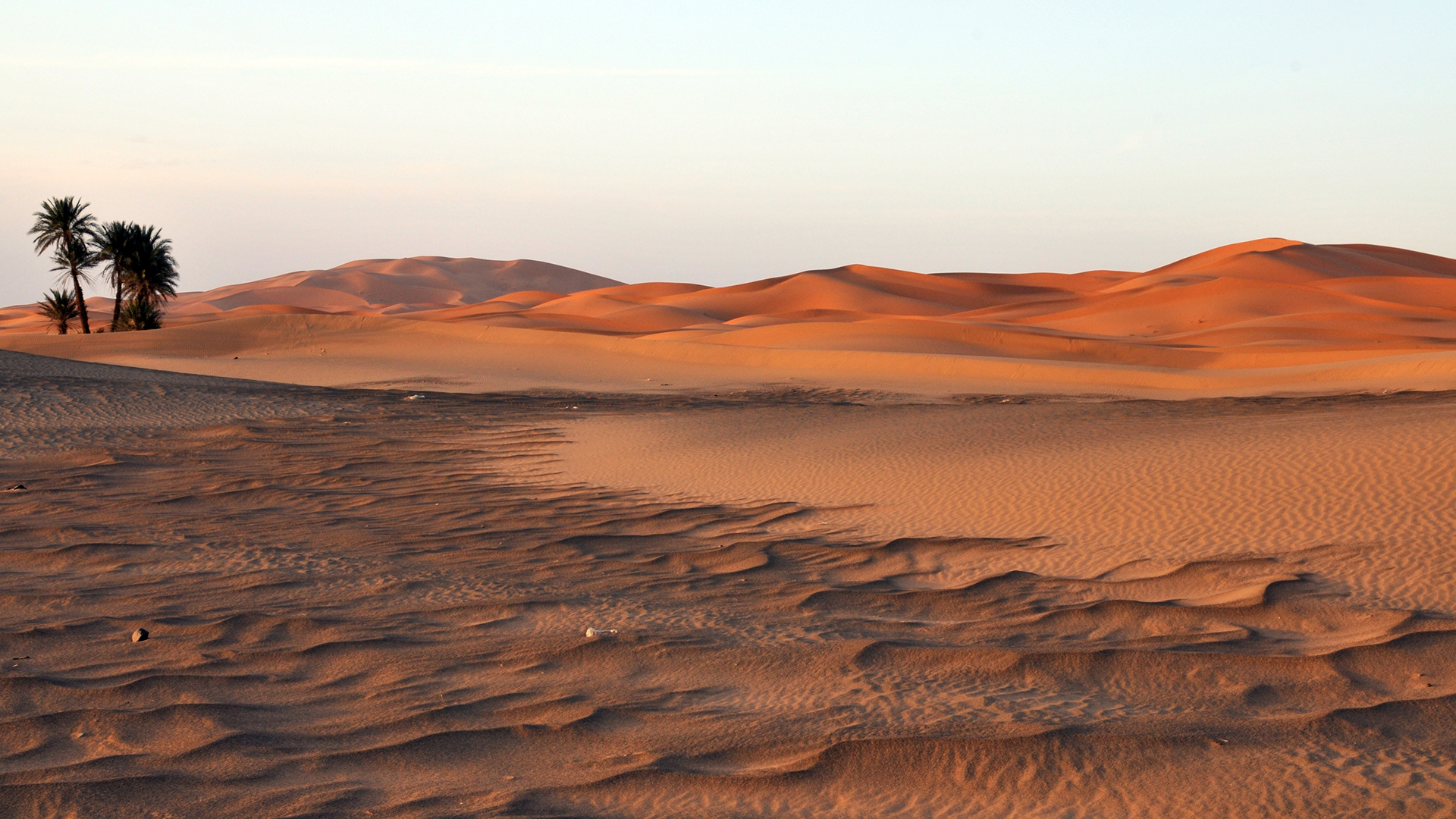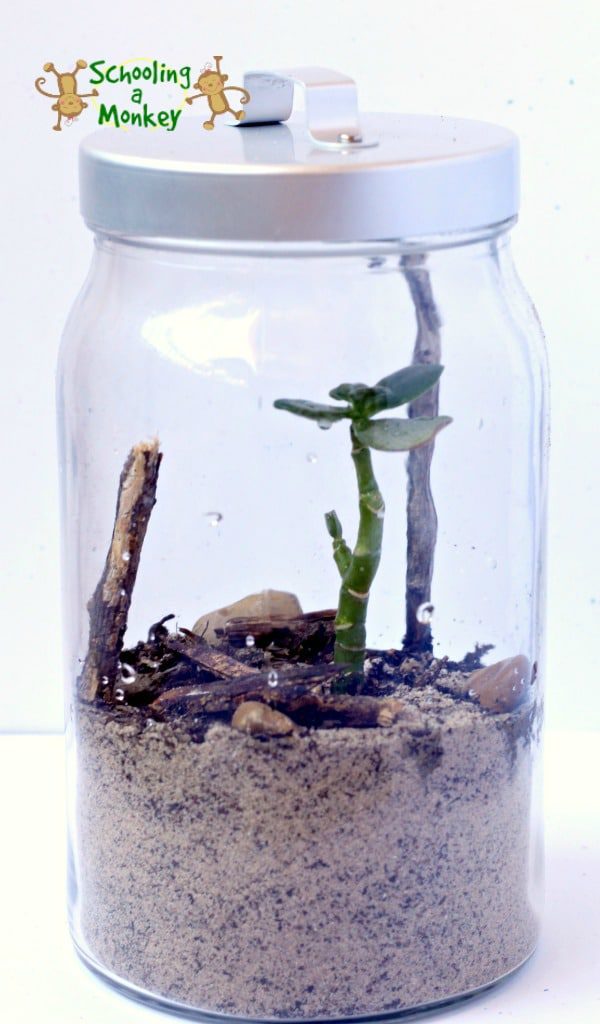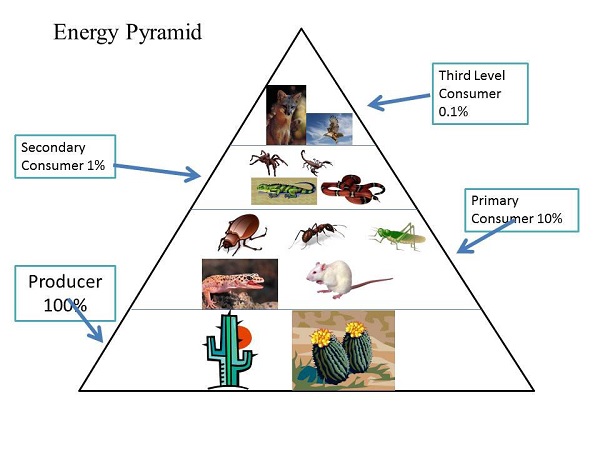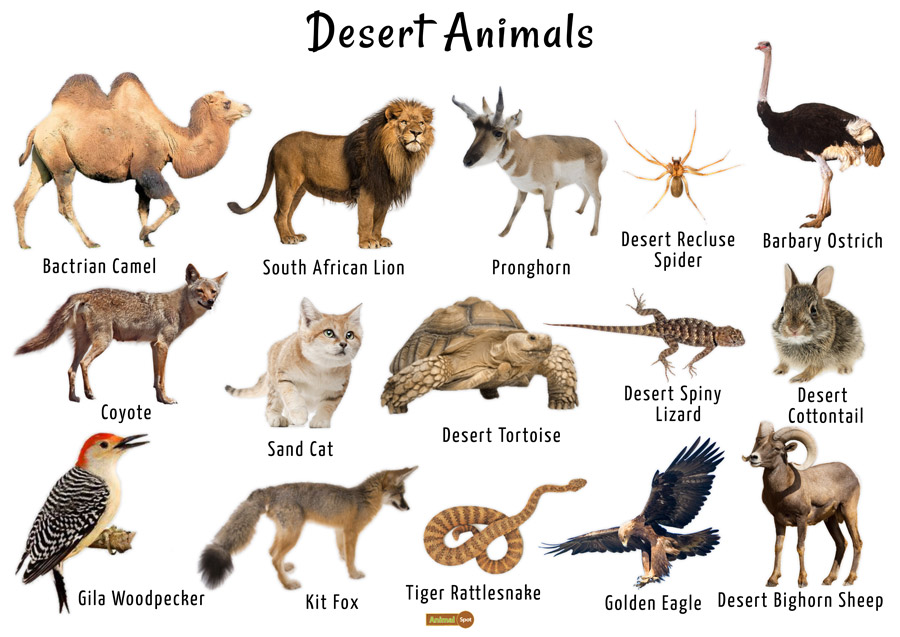Topic desert ecosystem producers: Explore the resilience and diversity of desert ecosystem producers, the vital foundation supporting life in the world"s most arid landscapes.
Table of Content
- How do producers contribute to the desert ecosystem?
- Understanding Desert Ecosystems
- Key Producers in Desert Environments
- Adaptations of Desert Plants
- Types of Deserts and Their Flora
- The Role of Producers in Desert Food Webs
- Challenges and Adaptations for Water Conservation
- YOUTUBE: Producers, Consumers, Decomposers
- Impact of Climate on Desert Producers
- Conservation of Desert Ecosystems
How do producers contribute to the desert ecosystem?
In the desert ecosystem, producers play a vital role in sustaining life and maintaining the balance of the ecosystem. Producers are organisms that can produce their own food through photosynthesis, using sunlight, water, and carbon dioxide.
Here are the ways in which producers contribute to the desert ecosystem:
- Food Source: Producers provide a primary source of food for other organisms in the ecosystem. They convert sunlight into energy-rich carbohydrates through photosynthesis. This energy is then passed on to consumers, such as herbivores and omnivores.
- Shelter and Habitat: Many producers in the desert, such as cacti, grasses, shrubs, and trees, serve as habitats and provide shelter for various organisms. These plants create microhabitats within their structure, offering protection from extreme temperatures and providing hiding places for smaller organisms.
- Soil Stabilization: Desert plants, especially deep-rooted ones like cacti, help stabilize the soil by anchoring it with their roots. This is crucial in preventing erosion in arid environments where strong winds and occasional rains can easily wash away the topsoil.
- Water Conservation: Desert plants have adapted to survive in dry conditions and have developed mechanisms to conserve water. Their root systems are well-suited for efficient water absorption, and they often have specialized structures like spines or waxy coatings that reduce water loss through transpiration. By conserving water, these plants help maintain the limited water supply in the desert.
- Nutrient Cycling: Producers in the desert contribute to nutrient cycling by absorbing nutrients from the soil, utilizing them for growth, and eventually releasing them back into the ecosystem when they die or shed leaves. This process is essential for maintaining the overall fertility and productivity of the desert soil.
In summary, producers are essential components of the desert ecosystem as they provide a source of food, create habitats, stabilize the soil, conserve water, and contribute to nutrient cycling. Their presence and adaptations enable a diverse array of organisms to thrive in the harsh conditions of the desert environment.
READ MORE:
Understanding Desert Ecosystems
Desert ecosystems are characterized by their extreme conditions—scorching temperatures, minimal rainfall, and sparse vegetation. Despite these harsh environments, they are home to a variety of life forms that have adapted to thrive under such conditions. Producers, or autotrophs, form the base of the desert food web, harnessing the power of the sun to create energy through photosynthesis.
- Water Conservation: Desert plants, such as cacti, have evolved sophisticated methods to minimize water loss and maximize water storage.
- Survival Strategies: Many producers have developed adaptations like deep root systems to tap into underground water sources, and thick, reflective leaves to reduce water loss and protect against the intense sun.
- Biodiversity: Despite appearances, deserts are not barren wastelands but are bustling with life, supporting a diverse range of producers from grasses and shrubs to hardy trees.
These ecosystems are finely balanced environments where each organism plays a critical role in sustaining the ecosystem. Understanding the adaptations and interdependencies of desert producers not only highlights the resilience of life but also the delicate balance maintaining these unique ecosystems.

Key Producers in Desert Environments
Desert environments, known for their harsh, arid conditions, host a variety of specialized producers that have adapted to survive with minimal water. These organisms are crucial for supporting life in desert ecosystems, providing food and oxygen through photosynthesis.
- Cacti: The quintessential desert plant, cacti have thick, fleshy stems that store water, and spines that minimize water loss and protect them from herbivores.
- Creosote Bush: This shrub is one of the most drought-tolerant plants in North American deserts, capable of surviving in the extreme heat and aridity by utilizing deep root systems.
- Saguaro: A symbol of the Sonoran Desert, the saguaro can store thousands of liters of water, enabling it to survive long periods of drought.
- Mesquite: With deep root systems that can tap into underground water sources, mesquite trees are vital for stabilizing soil and providing habitat and food for wildlife.
- Desert Wildflowers: These ephemeral producers burst into life following rain, transforming the desert landscape and providing food for pollinators.
These producers play a critical role in desert ecosystems, supporting a web of life in what might seem like uninhabitable conditions. Their adaptations not only allow them to survive but also to flourish, making them key components of their environments.
Adaptations of Desert Plants
Desert plants have evolved a fascinating array of adaptations to survive in the harsh desert environment, characterized by extreme temperatures, low water availability, and intense sunlight. These adaptations enable them to not only survive but also to thrive under these challenging conditions.
- Water Storage: Many desert plants, such as cacti, have thickened, fleshy parts adapted to store water. Their swollen stems or leaves can hold large quantities of water, which they use efficiently during dry periods.
- Reduced Leaf Surface Area: To minimize water loss through transpiration, some desert plants have small leaves or have evolved to have spines instead of leaves, reducing the surface area through which water can evaporate.
- Deep Root Systems: Certain desert plants have developed long taproots that can reach deep into the ground to access water sources far below the surface. This allows them to tap into underground moisture that is not available to plants with shallower root systems.
- Photosynthesis Adaptations: Desert plants like succulents use a special form of photosynthesis called CAM (Crassulacean Acid Metabolism) that allows them to open their stomata at night to reduce water loss, a critical adaptation for survival in arid conditions.
- Reflective Surfaces: Some plants have hairy or waxy coatings on their leaves or stems, reflecting sunlight and helping to keep the plant cool while also reducing water loss.
- Reproductive Timing: Many desert plants have adapted to bloom quickly following rare rainfall events, ensuring their seeds are produced and dispersed during the brief periods when water is available.
These adaptations are the result of millions of years of evolution, enabling desert plants to not just cope with, but often exploit, their environment to survive and reproduce in some of the planet"s most extreme habitats.

Types of Deserts and Their Flora
Deserts are diverse ecosystems that vary greatly depending on their location, climate, and other environmental factors. Each type of desert supports a unique set of flora that has adapted to its specific conditions.
- Hot and Dry Deserts: Characterized by extreme heat and sparse rainfall, these deserts are home to plants like the Saguaro Cactus and Joshua Tree, which have adapted to store and conserve water efficiently.
- Semi-Arid Deserts: These deserts have slightly more moisture than their hot and dry counterparts, supporting a wider variety of life. Plants such as the Sagebrush and various types of grasses are common, with adaptations for surviving in environments with limited water.
- Coastal Deserts: Found along coastlines, these deserts receive fog and dew which provide moisture. Unique flora such as the Namib Desert"s Welwitschia and various succulents thrive here, utilizing fog as a main water source.
- Cold Deserts: These deserts experience cold winters and have a different set of flora, including the Russian Thistle and various hardy grasses that can survive the freezing temperatures and dry conditions.
Each desert type presents a unique environment that shapes the adaptations and survival strategies of its plant life, creating incredibly resilient ecosystems full of diversity and specialized beauty.
The Role of Producers in Desert Food Webs
Producers play a fundamental role in desert ecosystems, forming the base of the food web. These organisms, primarily plants, convert solar energy into chemical energy through photosynthesis, providing the essential nutrients needed for various forms of life in the desert.
- Source of Energy: Desert producers like cacti, shrubs, and grasses are crucial for converting sunlight into energy, which is then passed on to herbivores and subsequently to predators.
- Water Regulation: Through their adaptations, producers also play a key role in water regulation within the desert, conserving water and making it available to other organisms.
- Soil Stabilization: The root systems of desert plants help to stabilize the soil, preventing erosion and creating a more habitable environment for various microorganisms.
- Nutrient Cycling: By decomposing, desert producers contribute to the nutrient cycling process, enriching the soil and supporting the growth of new plant life.
- Habitat Formation: Many desert animals depend on plants for shelter, nesting, and protection from predators and the harsh desert climate.
In this way, producers are not just food sources but also key players in maintaining the ecological balance of desert ecosystems, supporting life in one of the most extreme environments on Earth.
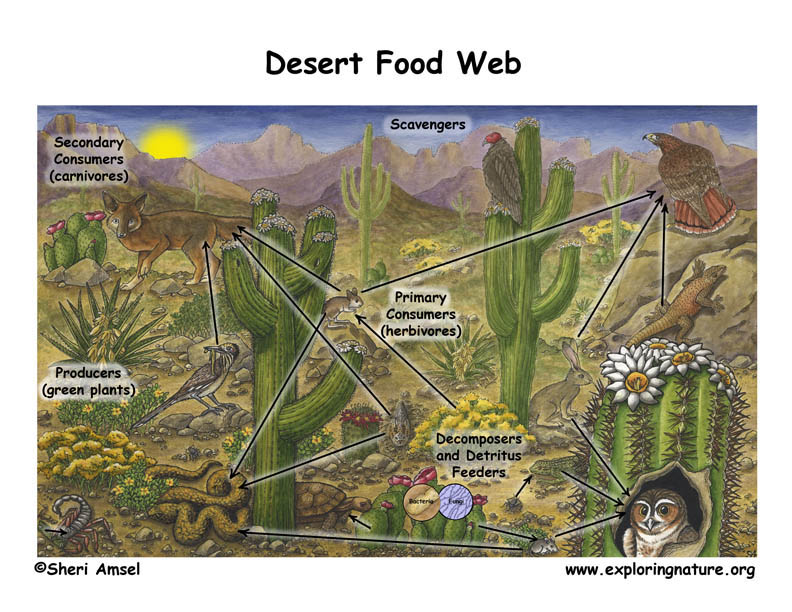
Challenges and Adaptations for Water Conservation
Water conservation is a critical challenge for all life in desert ecosystems. The scarcity of water shapes every aspect of existence, compelling desert organisms, especially producers, to evolve remarkable adaptations for survival.
- Deep and Extensive Root Systems: Many desert plants have evolved deep root systems that can reach far below the surface to access water. Others spread out wide to collect as much moisture as possible from a larger area.
- Reduced Transpiration: Plants minimize water loss by having smaller leaves or none at all, and some open their stomata only at night when temperatures are cooler and humidity is higher.
- Water Storage: Succulents and cacti store water in their leaves, stems, or roots, using this reserve during periods of drought. This adaptation is key to their survival in long, dry spells.
- Waxy Coatings: A waxy surface on leaves and stems helps to reduce water loss by reflecting sunlight and reducing evaporation.
- Camouflaging: Some plants have colors and patterns that blend with their surroundings, minimizing the impact of solar radiation and reducing the need for transpiration as a cooling method.
These adaptations are not just survival strategies but also a testament to the resilience of desert producers. They have ingeniously turned the challenges of their environment into opportunities, enabling the desert to bloom with life.
Producers, Consumers, Decomposers
Explore the wonders of our planet\'s magnificent ecosystem in this captivating video. Get ready to dive into the vibrant web of life, admire the interconnectedness between species, and witness the delicate balance that allows our planet to thrive. Prepare to be awed and inspired by the beauty and resilience of the natural world!
Trophic Levels: Producers, Primary Consumers, Secondary Consumers, Tertiary Consumers, Decomposers
Delve into the fascinating world of trophic levels with this intriguing video. Discover how energy flows through different levels of the food chain, unravel the complex relationships between predators and prey, and gain a deeper understanding of the crucial role each organism plays in maintaining ecological harmony. Prepare to be amazed by the intricate dynamics of nature!
Impact of Climate on Desert Producers
The climate plays a significant role in shaping the lives of desert producers, influencing their growth, distribution, and survival strategies. Desert climates, characterized by high temperatures, low rainfall, and intense sunlight, present unique challenges to vegetation.
- Temperature Extremes: Desert producers must withstand extreme temperature fluctuations between day and night, leading to adaptations such as thickened cuticles and specialized metabolic processes to minimize water loss.
- Water Scarcity: Low precipitation levels force plants to develop efficient water absorption and retention mechanisms, such as deep root systems and water storage tissues.
- Soil Conditions: Often poor in nutrients and organic matter, desert soils require plants to have efficient nutrient uptake mechanisms and symbiotic relationships with soil microorganisms to access the limited resources available.
- Sunlight Intensity: High levels of sunlight can cause damage to plant tissues; desert producers have developed reflective surfaces and pigments that protect them from UV radiation and help in maintaining internal temperatures.
- Adaptation to Drought: Many desert plants exhibit drought escape strategies, such as rapid life cycles that complete during brief wet periods, or drought endurance adaptations like dormancy periods until favorable conditions return.
Climate change and its impact on desert environments could further challenge these producers by altering precipitation patterns, increasing temperatures, and changing the frequency and intensity of droughts, potentially reshaping desert ecosystems in profound ways.
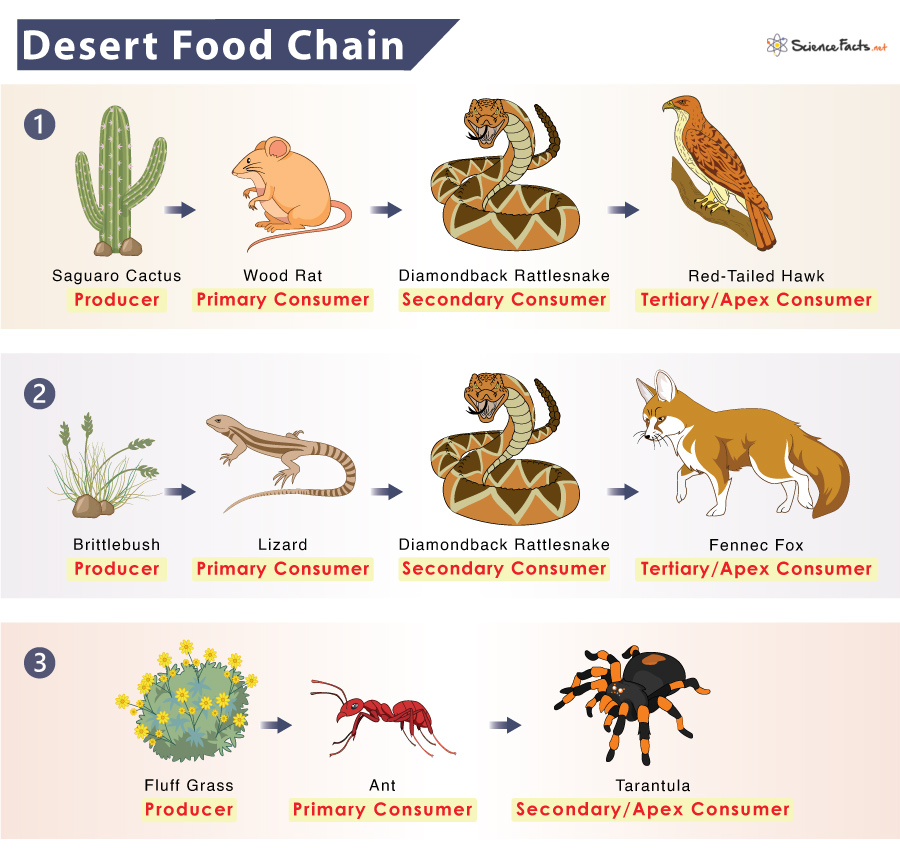
READ MORE:
Conservation of Desert Ecosystems
Conservation of desert ecosystems is crucial for preserving biodiversity, stabilizing climate, and sustaining local communities. These unique landscapes face threats from climate change, overexploitation, and habitat destruction, necessitating urgent and strategic conservation efforts.
- Protected Areas: Establishing and enforcing protected regions to conserve critical habitats and biodiversity, ensuring the survival of endangered species and the preservation of natural landscapes.
- Water Management: Implementing sustainable water use practices to address the scarcity of water resources in desert regions, benefiting both the ecosystem and the communities that rely on them.
- Restoration Projects: Rehabilitating degraded desert areas through the re-introduction of native species and the removal of invasive species to restore ecological balance.
- Climate Change Mitigation: Adopting strategies to mitigate the effects of climate change, such as reducing greenhouse gas emissions and promoting carbon sequestration through vegetation.
- Research and Monitoring: Conducting ongoing research to better understand desert ecosystems and monitoring changes over time to inform conservation strategies and adapt to emerging threats.
- Community Involvement: Engaging local communities in conservation efforts, providing education on sustainable practices and the importance of preserving desert ecosystems for future generations.
Effective conservation of desert ecosystems requires a comprehensive approach that combines protection, sustainable management, and restoration efforts, with a strong emphasis on community involvement and climate change mitigation.
Exploring the resilience and ingenuity of desert ecosystem producers reveals a world of adaptation and survival. Their story is a testament to the beauty and endurance of life in the harshest conditions, inviting us to appreciate and protect these vital ecosystems.


